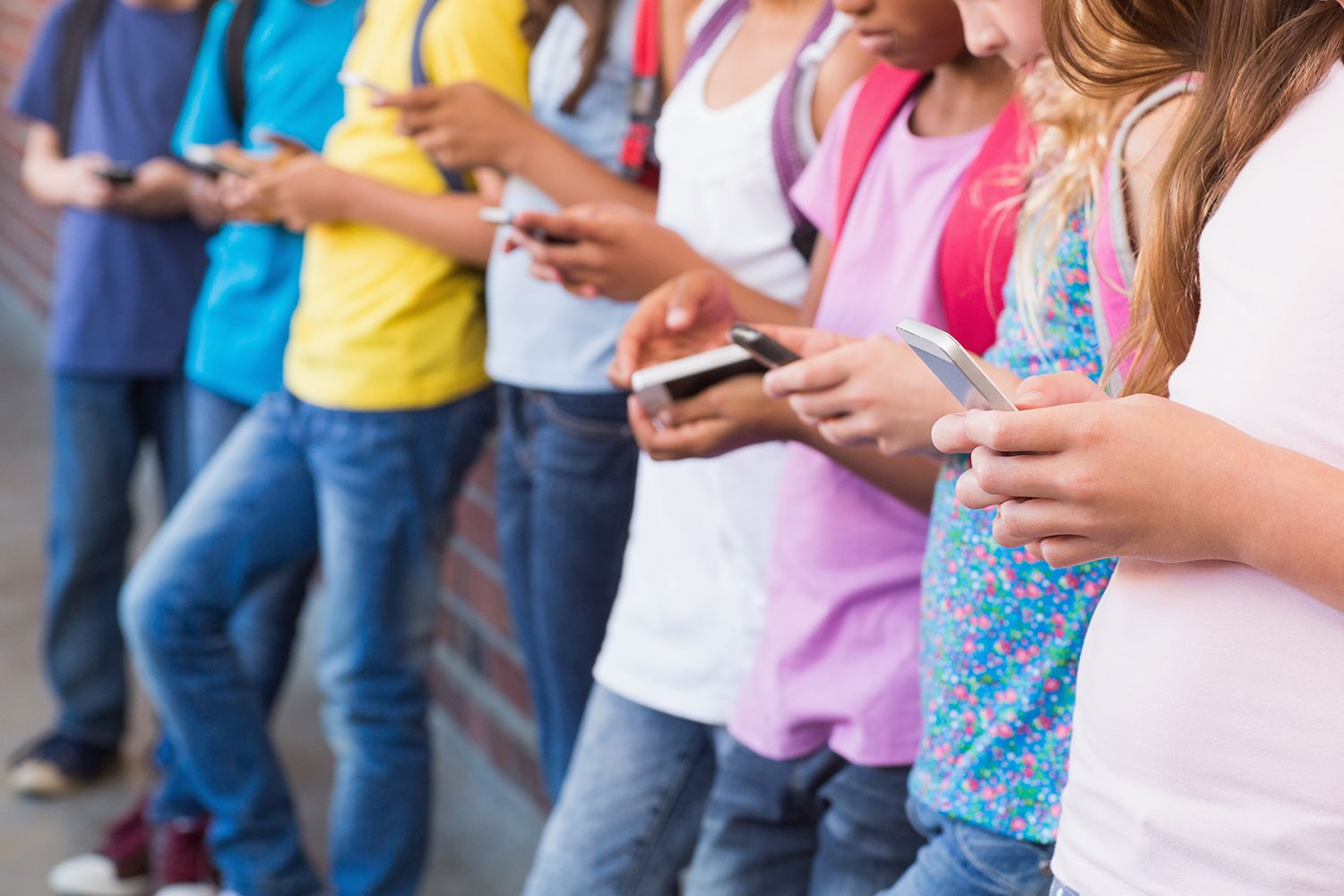Alarming Rise in Teen Anxiety: Are Smartphones to Blame?
By: Javid Amin
Social psychologist Jonathan Haidt’s new book, “The Anxious Generation,” throws down a gauntlet – teenagers’ widespread smartphone use is causing a mental health crisis, and we need immediate action. Haidt argues for a collective response, from parents to policymakers, to curb this pervasive issue.
A World Raised on Screens: The “Great Rewiring”
The book opens with a chilling analogy: would you raise your child on Mars, knowing the health risks? Similarly, a decade ago, parents couldn’t foresee the potential harm lurking within those shiny smartphones entrusted to their children. Haidt terms the period from 2010 to 2015 as the “great rewiring,” where extensive daily smartphone use fundamentally altered adolescent brain development, potentially priming them for anxiety and depression.
Is Gen Z Truly “Anxious”?
Haidt makes two central claims: Gen Z faces a significant mental health crisis, and smartphones are largely to blame. However, the book cautions against readily accepting these claims. While historical comparisons can make it seem like “the kids aren’t alright,” a critical look is necessary.
Haidt acknowledges opposing viewpoints, then builds his case using data – not just self-reported issues, but hard evidence on self-harm, suicide rates, and diagnosed mental health disorders among teenagers. He expands his focus beyond the US, observing similar trends in youth mental health across Western countries.
Is it an Epidemic?
The book would benefit from a more systematic breakdown of the science behind these trends. However, Haidt marshals evidence showing a consistent rise in adolescent mental health issues and overall well-being concerns, starting around 2010 and primarily affecting girls initially. While these figures paint a concerning picture, it’s important to note that a large majority of Gen Z doesn’t experience anxiety disorders, and for those who do, other factors might contribute.
A Looming Catastrophe?
Perhaps the most alarming aspect of Haidt’s data is not the current state, but the trajectory. Rates of mental health issues appear to be steadily worsening, suggesting a potential unfolding crisis. If this is true, what’s causing it?
Beyond Easy Answers: Resisting the “Witch’s Mirror”
Haidt warns against simplistic explanations. Just like past panics about heavy metal or Dungeons & Dragons, it’s easy to project our biases onto the problem. He acknowledges his own prior focus on the negative influence of certain educational ideologies, but recent data suggests this hypothesis doesn’t fully explain the global and multifaceted nature of the decline in adolescent mental health.
Alternative Explanations: A Bleak World or a Mix of Factors?
Perhaps today’s youth are anxious because they have reason to be. They face a world grappling with climate change, social injustices, and uncertain futures. However, Haidt argues that past generations with similar challenges didn’t experience such widespread mental health issues.
The reality is likely a complex interplay of factors. Haidt acknowledges that smartphone use isn’t the sole culprit. He points to the rise of “safetyism” – prioritizing individual safety above other values – and helicopter parenting that shields children from vital developmental experiences like unsupervised play and exploration in the real world. Ironically, parents worried about physical safety might have inadvertently opened their children up to the virtual world’s unhealthy dangers.
From Curiosity to Compulsion: The Toxic Tech Mix
Initially, smartphones weren’t seen as major developmental concerns. However, around 2010, a confluence of factors transformed them. The combination of social media, high-speed internet, front-facing cameras (promoting selfies), addictive games, readily available pornography, and free apps designed to cultivate user dependence created a toxic mix. This “rewiring” of young minds, according to Haidt, leads to four core issues:
- Social Deprivation: Smartphones act as “experience blockers,” consuming hours that could be spent on physical play or in-person interactions.
- Sleep Deprivation: Teenagers stay glued to their devices late into the night, sacrificing crucial sleep.
- Attention Fragmentation: Alerts and messages disrupt focus and the ability to concentrate on tasks.
- Addiction: Apps and social media are designed to exploit teenagers’ psychological vulnerabilities, leading to an inability to find enjoyment elsewhere.
These foundational concerns are further amplified by gender differences. Girls reportedly experience the damaging effects of social media more acutely, whereas boys gravitate towards online gaming and pornography.
How Smartphones Hijack Our Natural Needs
Haidt argues that teenagers, like all humans, are driven by fundamental emotional needs and desires: social connection, a sense of control, and sexual fulfillment. Historically, these needs were met through real-world interactions like making friends, playing games, navigating challenges, and developing romantic relationships. While these experiences might involve setbacks and frustrations, they’re crucial for adolescent development and mental health. Children are inherently “antifragile,” meaning they require a certain degree of stress and risk to grow properly.
Smartphones, however, offer a seemingly convenient alternative. Apps, games, and social media cater to these core needs, but without the challenges or authentic outcomes that come with real-world experiences. For example, a lonely teenager might turn to Instagram for connection, receiving a temporary dopamine hit. However, this doesn’t foster genuine friendships or the resilience built through navigating real-world social interactions. In the long run, it can exacerbate loneliness and isolation.
So, What Can We Do?
Even if we accept Haidt’s claims about smartphone-fueled anxiety, the solution remains unclear. Perhaps technological advancements will offer unforeseen solutions in the future. However, Haidt argues for a collective response. The issue isn’t solely about the inherent appeal of smartphones or the addictiveness of apps. In a school setting, for instance, if most students have smartphones, those without them risk social ostracization. Therefore, Haidt believes isolated efforts by individual parents are unlikely to be successful.
Ironically, parental anxieties about child safety, which Haidt previously critiqued, could be a powerful force for change. Just as some parents wouldn’t allow their children near needles, a growing number might view smartphones as the modern-day equivalent, prioritizing their mental health. Haidt proposes four key solutions that require collaboration between parents, legislators, and educators:
- No Smartphones Before High School: Delaying smartphone access allows for crucial brain development during these formative years.
- No Social Media Before 16: Social media platforms can be particularly detrimental, and delaying access allows teenagers to develop stronger social skills and self-esteem in the real world before navigating the online world.
- Phone-Free Schools: Schools can create environments free from distractions, fostering focus and in-person interactions.
- More Independence and Responsibility in the Real World: Encourage unsupervised play, exploration, and activities that build resilience and real-world social connections.
A Battle for Our Humanity: A Deeper Concern
Haidt’s book raises a more profound worry. Suppose real-world interactions with family, friends, and communities – messy, unpredictable, and sometimes frustrating as they may be – are essential for human flourishing. On the other hand, the online world is becoming increasingly smooth, convenient, and meticulously tailored to our preferences. Algorithms constantly refine our online experience, while profit-driven industries strive ever more aggressively to capture and maintain our attention. In this light, the real world might struggle to compete. The mental health issues currently plaguing Gen Z might become a recurring theme for future generations.
If this is the case, then Haidt’s proposed reforms could be the opening salvo in a long battle – a battle between our inherent need for real-world connection and the ever-present allure of a virtual world offering a seemingly irresistible promise: “a little bit of everything, all of the time.”






